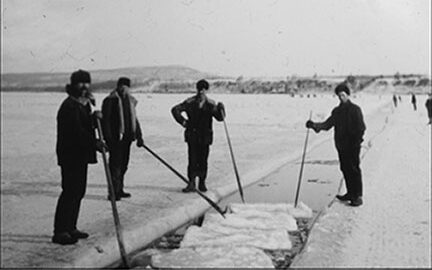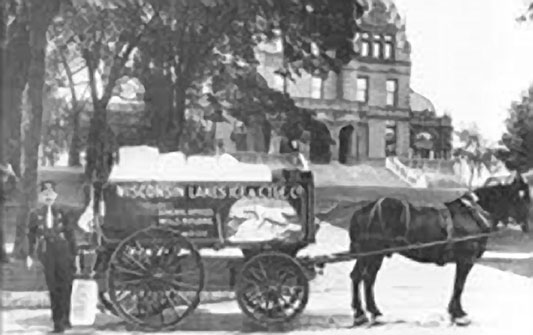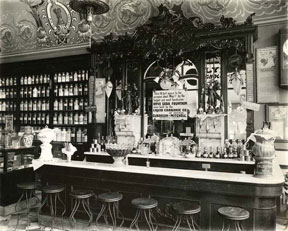
Head back to 1880. It’s January — time to cut blocks of ice out from rivers, lakes and ponds. Ice harvesting involved waiting until approximately a foot of ice had built up on the water surface in the winter. The ice would then be cut, with either a handsaw or a powered saw blade, into long continuous strips and then cut into large individual blocks for transport by wagon back to the ice house.
The ice was used in iceboxes in the home — also meatpacking and breweries. The use of ice boxes continued into 1940’s.

The ice man is coming — often the horse knew which houses got ice. The kids knew when the ice man was coming — plotting how to get a chip of ice or better yet hoping in the back sneaking a ride. The goal was to sneak into the back of the wagon before the iceman knew that you were there. Grab an ice chip and hop off.

The ice blocks weighed from 20 to 40 pounds — lots of work. Like the milkman, the iceman was a local character delivering blocks of ice to both houses and apartments on his route that had an “ice today” card in the window.

The corner Drug store got a delivery of ice. That got mixed with rock salt. Then packed around the ice cream to keep it cold. That’s were you sent your kids to get a quart of ice cream to go with a meal. Anything left over at the end of the day was “soft” and had to be tossed out.
ROBBER ICE BARONS — were a problem in the late 1800’s and early 1900’s. With an affordable supply of ice, restaurants, and factories could now keep food from spoiling. City dwellers could keep their food cool — changing America’s diet. Butchers, restaurants and fish markets now had ice — improving our health. Breweries with ice could now work year round.

A mild winter resulted in less ice. In May, 1900, the NYT alleged that, “ice companies purposely jacked their prices.” The American Ice Company thus ending up with a monopoly on ice. They doubled the price of ice with a whopping 100% increase. Everyone knew that they had been taken but there was no recourse. Ice that had sold for twenty five cents per 100 lbs. a year ago, went to fifty cents per l00 lbs. overnight.
